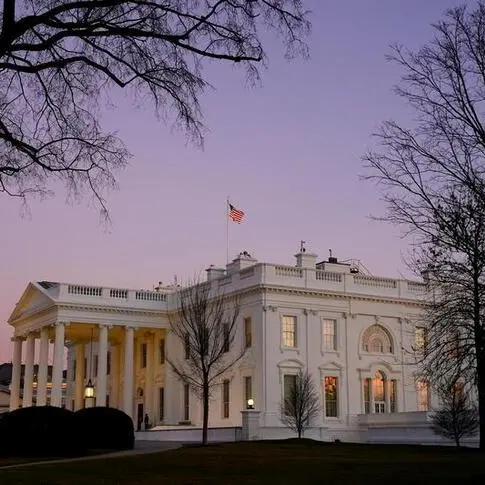PHOTO
Federal Reserve officials will look at new wage data due out Friday to confirm what many have come to suspect: That rising worker pay at this point is helping to keep the U.S. economy growing at a modest pace without fanning the inflationary pressures they are trying to squelch.
Wages last month likely rose at a 4% annual rate, according to a Reuters poll of economists, extending a slow decline in the pace of pay increases but still above the 3% level policymakers view as consistent with their 2% inflation target.
However alongside a recent jump in worker productivity and a moderation in the average number of hours worked by each employee, labor costs for each unit of output actually fell during the third quarter of the year, muting wage growth as a reason for companies to raise prices even as it left workers with more money to spend. In remarks at Spelman College last week Fed Chair Jerome Powell noted while the pandemic-era savings that had been driving consumer demand may be about exhausted, rising pay had picked up the slack.
"As long as unemployment remains low...and wages are moving up above inflation, there's no reason why spending wouldn't continue to hold up," Powell said.
The hope for the Fed is that demand moderates enough to allow inflation to continue slowing without collapsing altogether in a slide towards recession.
'SUDDEN COLLAPSE LOOKS UNLIKELY'
The November payrolls report, including figures on hourly wages and hours worked, is among the last major data releases before the Fed's Dec. 12-13 policy meeting. Fed officials are expected to leave the benchmark interest rate steady at 5.25% to 5.5%, remaining on hold for the third meeting in a row.
Economists polled by Reuters estimate the economy added about 180,000 jobs in November, near the prepandemic average, with the unemployment rate unchanged at 3.9%.
Coupled with moderating wage growth, strong productivity, and other data depicting a labor market looking more like it did before the pandemic, that would bolster the Fed's current outlook of an economy gliding back to normal.
“In 2023, we saw a tailwind from consumer spending in the U.S. as a result of the stockpiled savings built up during the pandemic," Daniel McCormack, head of research with Macquarie Asset Management, told reporters on a conference call this week. "Looking ahead to 2024, we expect to see a slowdown in spending - it may not completely fall off a cliff, but with savings depleted we don’t expect the same level of spending to continue."
Indeed consumer spending grew just 0.2% in October, and its average growth over the past nine months has returned to the pre-pandemic trend.
Consumer credit grew by $5.2 billion in October, down from around $12 billion the month before as higher interest rates likely weigh on the ability or willingness of households to borrow, an impact the Fed expects to intensify.
Pantheon Macroeconomics economists Ian Shepherdson and Kieran Clancy said the performance of U.S. consumer credit, including a recent rise in delinquency rates, made them expect a "softening" in consumption only.
"We are not unduly alarmed at this point," they wrote about rising delinquency rates. "The trends in consumer credit supply and demand are consistent with a further softening in real consumption, but a sudden collapse looks unlikely."
'HOW LONG CAN THAT CONTINUE'
That is an outcome the Fed would welcome.
Officials have at times struggled to reconcile what they think the economy needs - slower wage and job growth, less overall demand, and even a modest rise in the unemployment rate - with the common-sense interpretation of more money and more jobs as good things.
Friday's wage data will help show if the job market continues to edge back towards balance. Some analysts, though, are skeptical, arguing that progress may be slowing and may leave the Fed still needing a further rise in the unemployment rate for inflation to continue to fall.
Data compiled by the Atlanta Fed, for example, estimates that as of October people who switched jobs were still commanding wage increases of 6.6%, far above the roughly 4% seen before the pandemic, and a possible concern even as the rate at which workers are shuffling among jobs has declined.
Torsten Slok, chief economist at Apollo Global Management, recently estimated that wage growth was "sticky" and lodged between 4% and 5%, enough for Fed officials to conclude "that a higher unemployment rate is needed to get wage inflation down to levels consistent with the Fed’s 2% inflation target."
After next week's meeting and Powell's press conference, it will become clearer if he sees that as the case.
But at the end of the Fed's last meeting he suggested that, for now, the wheels are turning in a good way - with wages rising enough to sustain spending and overall economic growth, even as changes elsewhere in the economy allow inflation to continue to fall.
"The dynamic has been really strong job creation with now wages that are higher than inflation...and that raises real disposable income, and that raises spending, which continues to drive more hiring," Powell said at his Nov. 1 press conference. "It has been good, and the thing is, we’ve been achieving progress on inflation in the middle of this...The question is, how long can that continue?"
(Reporting by Howard Schneider; Editing by Dan Burns and Andrea Ricci)























